Spain
Robert Capa's Photographs
Of the Spanish Civil War
Leslie A. Martin,
Editor
(Aperture)
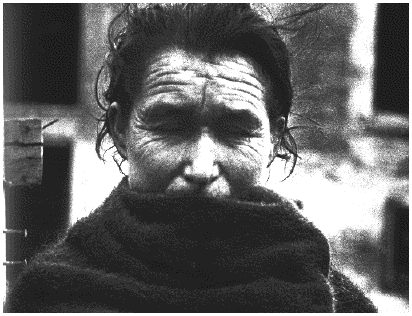 It was a terrible war, right? All wars are terrible, but the Spanish Civil War, which lasted less than three years, and killed, wounded, or drove out almost a million people, is one that still resonates in our hearts.
It was a terrible war, right? All wars are terrible, but the Spanish Civil War, which lasted less than three years, and killed, wounded, or drove out almost a million people, is one that still resonates in our hearts.It was, as they say, the curtain-raiser on WWII --- and to those of us who believed in the wonder of human freedom and the hopes of democracy --- the end, the loss of the Republic, was a bitter denouement. It's probably impossible for those who weren't alive, or at the age of reason, between 1936 and 1939, to comprehend how this one gripped us. This poor country had just begun to awake --- land reform, labor unions, enlightened social policy, arts and freedom --- and then was suddenly thrown back into the dark ages. A free government came under attack by its own military --- joined by the monarchists, with the full support of the Catholic Church, and died because of the vicious assistance new dictatorships in Germany and Italy. By 1938, armaments sent in by Hitler had turned the tide in a war that --- up to that point --- had been a stalemate. With the withdrawal of Stalin's support that same year, and the "neutrality" of Britain, France, and the United States, it was all over by the summer of 1939.
What was it that gripped us so? Was it because it was a "people's war" against oppression? Was it that the Stukas bombing a helpless population in Guernica, and Picasso's famous symbolic painting of that event? Was it the cold invading military, under Francisco Franco, landing an army that took no hostages?
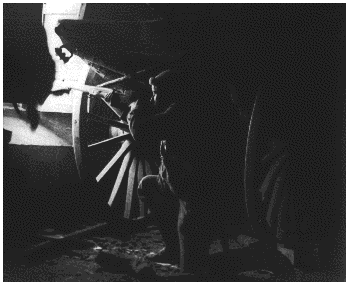 Was it the murder of Federico García-Lorca, the imprisonment and death of Miguel Hernández, the exiles of Luis Buñuel, Pablo Casals, Juan Ramón Jiménez, Luis Cernuda? Was it the writings --- those of Ernest Hemingway, George Orwell, W. H. Auden, C. Day Lewis, Stephen Spender, Christopher Isherwood? Was it Pete Seeger --- one of the "International Brigade" --- singing "Los Cuatro Generales," a scratchy 78 rpm record, recorded in the hills of Córdoba? Or is it the photographs of Robert Capa, that now, sixty-five years later --- can still stop the heart...the thousands of bleak pictures, of which he once said,
Was it the murder of Federico García-Lorca, the imprisonment and death of Miguel Hernández, the exiles of Luis Buñuel, Pablo Casals, Juan Ramón Jiménez, Luis Cernuda? Was it the writings --- those of Ernest Hemingway, George Orwell, W. H. Auden, C. Day Lewis, Stephen Spender, Christopher Isherwood? Was it Pete Seeger --- one of the "International Brigade" --- singing "Los Cuatro Generales," a scratchy 78 rpm record, recorded in the hills of Córdoba? Or is it the photographs of Robert Capa, that now, sixty-five years later --- can still stop the heart...the thousands of bleak pictures, of which he once said,
No tricks are necessary to take pictures in Spain. You don't have to pose your camera. The pictures are there, and you just take them. The truth is the best picture, the best propaganda.
Capa was there for almost the whole of the war, save for a few months when his love and fellow photographer --- Gerda Taro --- was killed by a tank. He was rarely far from the front; indeed, his most famous photograph, that of a falling soldier, was taken at Cerro Muriando, Córdoba, in 1936. The sequence of photographs presented in Heart of Spain is the sequence of the rise and fall of the Republican Army: at first --- fresh uniforms, the obvious confidence, the youth --- smiling, always smiling. Then, later, the grubbiness and desolation and grief of an army that is constantly retreating. And finally, at the last, joining the 500,000 refugees, marching dumbly over the mountains into France.
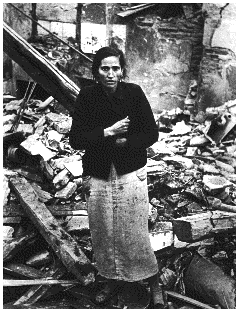 But this is as well the record of a war --- what do they call it? --- a total war. The civilians were considered to be fair game for the bombers and tanks and soldiers. To me, more than the faces of tired and dirty men fighting a grim war are the photographs of women who were forced to live with the bombs, and the strafings, and the poverty, the hunger and the death of their children. The faces of some of them, standing amid the rubble of their own homes are the symbol of the fruits of war, in the twentieth century --- what they once called The Century of Progress.
But this is as well the record of a war --- what do they call it? --- a total war. The civilians were considered to be fair game for the bombers and tanks and soldiers. To me, more than the faces of tired and dirty men fighting a grim war are the photographs of women who were forced to live with the bombs, and the strafings, and the poverty, the hunger and the death of their children. The faces of some of them, standing amid the rubble of their own homes are the symbol of the fruits of war, in the twentieth century --- what they once called The Century of Progress.
This is a fine collection, and a fine tribute to Capa. The narrative is excellent, and Juan P. Fusi Aizpúrua's précis of the Spanish Civil War --- "The Culture of Antifascism" --- is compact, cogent, literate, and honest (he doesn't hide from the viciousness of the Nationalists, nor of the Republicans.) The photographs were drawn from the archives of Capa, but, too, from caches of photographs that had been hidden during WWII, some not found until very recently. They are all presented with the usual great art and care for which Aperture is so rightfully famous.
Guide
Cuba
Danny Aeberhard, Editor
(Insight/Distributed by
Langenscheidt Publishers)
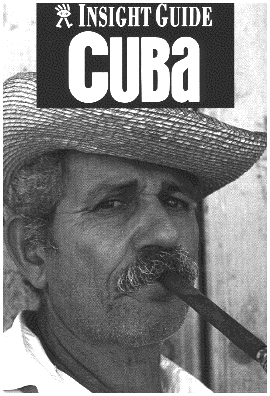
Our other rule is a technological one. Those of us who are naturally curious are bound to be restless. This applies in spades for those of us who are not interested in twiddling our thumbs while we are waiting for some document to download. We are not interested in scrolly graphics and black swirly backgrounds. We want the words, and the pictures PDQ.
This means that all the pages of RALPH will be clean as a whistle, however clean that is. We'll abjure any computer tricks that require downloads that require more than five seconds. Our pages are, by definition, simple to the point of austerity. This must mean that we do no color photographs --- only black-and-white shots, or line drawings.
Most of the time we don't regret this decision. But when it comes to some of the stunning art books from Aperture, or a title like Insight Guide Cuba --- filled with fine color photographs, artistically laid out on the page, reproduced with care, printed with love --- then we regret that we cannot show the wonders awaiting potential readers.
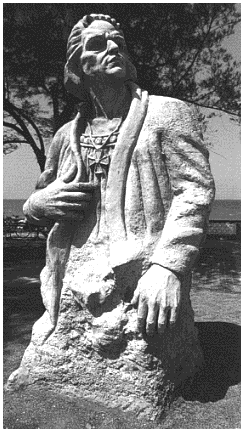 In addition to the fine layout, what we like about Insight is their no-nonsense approach. Putting out a tourist guide to Cuba, Vietnam, Calcutta, or Korea involves touchy areas for Americans, having to do with politics, poverty, and American foreign policy. To be honest in the face of these requires a certain editorial sensitivity.
We can say that the Insight people move through these delicate areas with aplomb.
In addition to the fine layout, what we like about Insight is their no-nonsense approach. Putting out a tourist guide to Cuba, Vietnam, Calcutta, or Korea involves touchy areas for Americans, having to do with politics, poverty, and American foreign policy. To be honest in the face of these requires a certain editorial sensitivity.
We can say that the Insight people move through these delicate areas with aplomb.
In the posh dining-room of Varadero's Hotel Meliá, the air-conditioning runs full blast and the upbeat disco music plays in the background. Sunburned tourists pass by the breakfast buffet, eyeing the heaps of cold meats, imported cheeses, muffins and pitchers of fresh juice that have just been laid out for them....A few miles away in the city of Cárdenas, local Cuban women jockey for the chance to buy a stale loaf of black-market bread.
Further on, in the Travel Tips Section of Cuba, they write,
Visas for U S Citizens [are] handled by the Cuban interest section in Washington, DC. United States Treasury Department regulation prohibit U S citizens from spending money in Cuba unless they qualify as journalists, researchers, or relatives of Cubans living on the island...Americans who oppose their government's trade and travel blockade against Cuba regularly evade or purposely violate these restrictions, and some do so just out of curiosity; many fly in via Mexico or Jamaica. Although they could, theoretically, be prosecuted --- they generally aren't.
Insight Guide Cuba doesn't hide from the facts of political life, both pre- and post-Castro; nor --- as is obvious with the examples above --- do they hide from the truth what visitors will find. They discuss the garishness of life under earlier dictators, acknowledging that one of the reasons that Castro came to power was a reaction to the Ugly Americans flooding the island under Batista, looking for whores, cheap booze, and gambling, and the fact that Batista had sold the island out to the highest bidder: Cubans did not own their own island.
Those who have travelled there in the last few years --- those who love Cuban culture --- must despair because the government, while growing more and more dependent on the foreign tourist, is still committed to a heavy-handed protection of its peoples against what they see as the virus of Western capitalism. One of my friends has travelled there several times, and finds it wonderful and despairing. He has a warm spot in his heart for Cuban women (he says the heat of the island is absorbed into their souls, and they can only exorcise this heat by flirting, dancing, and making love). However, on his most recent visit, he told me that, because of incipient drug problems, 98% of Cubans had been restricted from contact of any sort with the visitors --- and the fines for violators were heavy. For him, going to Cuba was a trip into the heart of frustration, and he reports that it will be a long time before he returns.
 If you want sunshine and a culture frozen in the days of Eisenhower --- and don't mind being segregated from the homefolk --- then Cuba is the place for you. If you can't make it this year, let Insight Cuba do it for you with over 600 gorgeous photographs. You'll miss some, but not all, of its passion.
If you want sunshine and a culture frozen in the days of Eisenhower --- and don't mind being segregated from the homefolk --- then Cuba is the place for you. If you can't make it this year, let Insight Cuba do it for you with over 600 gorgeous photographs. You'll miss some, but not all, of its passion.
There are four hundred different Insight Guides available --- running from Alaska to Yemen, stopping off in Cyprus, Delhi, Nambia, Peru, Sicily, and Turkey on the way. They also have "Pocket" and "Compact" Guides. They are all well worth it.
Benjamin's
Gift
Michael Golding
(Warner)
...eight of the children drew faces with strawberry birthmarks on their cheeks. When it was time for the geography lesson, a tall, gangly boy in the back room announced that "Texas was like a giant splotch across the face of the United States."
However, Benjamin had something else going for him. He learned, early on, to teletransport his body any place on earth --- but only for forty-five minutes.
He was an orphan, but ended up in the home of Jean Pierre Michel who cornered the market in chicle in the 1920s, so the old man is able to indulge in his hobby of collecting things --- anything that strikes his fancy --- knives and antique guns and miniature clocks:
He had a grand time with musical clocks, acquiring a Ceylonese satinwood seven-tune carillon and a tortoiseshell-and-ormolu eight-tune Turkish bell, and he had a field day with automatons, acquiring a turn-of-the-century Phalibois with a pair of spinning cupids and a late Mastongris with a tightrope walker and six dancing elephants.
Cassandra Nutt, a gorgeous black lady, lives there too, and is in charge of taking care of Jean Pierre, who wants her, but can't have her. Unfortunately, after he grows to manhood, Benjamin, in the midst of a bout of self-abuse, teletransports himself onto the roof where Cassandra is sunbathing and when she sees him, "his pants around his ankles --- his thing exposed like a catfish out of the creek --- was more than she could process." To Benjamin, "she seemed like nothing so much as a great chocolate sea in which he was destined to drown...Neither of them could stop it..."
So he leaves, and travels to Europe, where he hooks up with the Family Guildenstern, a Jewish Circus in Holland. He's a bit uneasy with this body teletransport business, so he doesn't reveal it until all of them get sent to a concentration camp. He tells his secret to Hannah:
"You can disappear," she said.
"I know it sounds crazy," said Benjamin, "but I swear to you it's true..."
"I've seen a lot of strange things in my life, Benjamin. But nothing has been stranger than what I've seen inside this camp." She looked into Benjamin's eyes. "If you say you can disappear, then I believe you..."
They tell Abram, another member of the Family Guildenstern.
At first Abram was utterly silent. Then he shook his head and said, "All this time you've been the circus act of the century and you never bothered to tell us?"
After reading and reviewing for almost forty-five years, I've found a simple way to test a book. I open it to any page, at random, and start reading. If I am still reading after two pages, then it's worthy. If I am still reading after then, then it's dynamite. I'll confess, Benjamin's Gift wouldn't leave me alone until I finished it. This man Golding is a master story-teller --- he knows how to weave a tale. He knows language. He avoids the cliché. He knows detail (see the clock passage above). He is funny. He can be sad. He's worth your time.